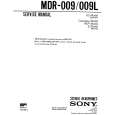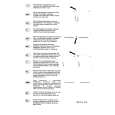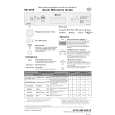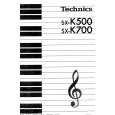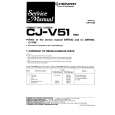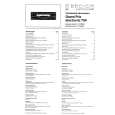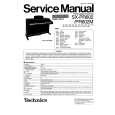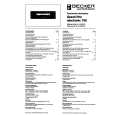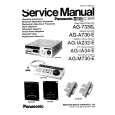|
|
|
Kategorie
|
|
Informacje
|
|
Polecamy
|
|
|
 |
|
|
Dla tego produktu nie napisano jeszcze recenzji!
 ;
Dokładna dokumentacja, pomogła w szybkiej naprawie telewizora. Dziękuję!
 ;
jedyne do czego mogę mieć zastrzeżenie to jakość zdjęć zawartych w przesłanej instrukcji serwisowej ponieważ są fatalnej jakości, praktycznie nieczytelne. tak poza tym jestem zadowolony to jest to czego szukałem.
 ;
Wszystko w porządku.
Instrukcja czytelna i kompletna.
Dziękuję.
all right!
thank you.
 ;
Bardzo dobra instrukcja. Zawiera wszystko co potrzeba, polecam!
 ;
Instrukcja jest OK. Schematy czytelne, opisane niektóre procedury.
ELECTRICAL ADJUSTMENTS
2-12: PARABOLA 1. Receive the crosshatch signal from the Pattern Generator. 2. Using the remote control, set the brightness and contrast to normal position. 3. Activate the adjustment mode display of Fig. 1-1 and press the channel button (30) on the remote control to select �PARABOLA�. 4. Press the VOL. UP/DOWN button on the remote control until the right and left vertical lines are straight. 2-13: CORNER CORR TOP 1. Receive the crosshatch signal from the Pattern Generator. 2. Using the remote control, set the brightness and contrast to normal position. 3. Activate the adjustment mode display of Fig. 1-1 and press the channel button (32) on the remote control to select �COR TOP�. 4. Press the VOL. UP/DOWN button on the remote control until the upper section of the both ends vertical lines are straight. 2-14: CORNER CORR BOTTOM 1. Receive the crosshatch signal from the Pattern Generator. 2. Using the remote control, set the brightness and contrast to normal position. 3. Activate the adjustment mode display of Fig. 1-1 and press the channel button (33) on the remote control to select �COR BTM�. 4. Press the VOL. UP/DOWN button on the remote control until the bottom section of the both ends vertical lines are straight. 2-15: OSD HORIZONTAL 1. Activate the adjustment mode display of Fig. 1-1. 2. Press the VOL. UP/DOWN button on the remote control until the difference of A and B becomes minimum. (Refer to Fig. 2-2) 2-16: BRIGHT CENTER 1. Receive the monoscope pattern. (RF Input) 2. Using the remote control, set the brightness and contrast to normal position. 3. Activate the adjustment mode display of Fig. 1-1 and press the channel button (17) on the remote control to select "BRI CENT". 4. Press the VOL. UP/DOWN button on the remote control until the white 10% is starting to be visible 5. Receive the monoscope pattern. (Audio Video Input) 6. Press the INPUT SELECT button on the remote control to set to the AV mode. Then perform the above adjustments 2~4. 7. Press the DVD button on the remote control to set to the DVD mode. 8. Activate the adjustment mode display of Fig. 1-1 and press the channel button (17) on the remote control to select "BRI CENT". 9. Press the RIGHT/LEFT button on the remote control to increase the step numbers by 10 steps to the AV. 2-17: TINT 1. Receive the color bar pattern. (RF Input) 2. Using the remote control, set the brightness, contrast, color and tint to normal position. 3. Connect the oscilloscope to TP803. 4. Activate the adjustment mode display of Fig. 1-1 and press the channel button (26) on the remote control to select "TNT". 5. Press the VOL. UP/DOWN button on the remote control until the section "A" becomes a straight line (Refer to Fig. 2-3). 6. Receive the color bar pattern. (Audio Video Input) 7. Press the INPUT SELECT button on the remote control to set to the AV mode. Then perform the above adjustments 2~5. 8. Press the DVD button on the remote control to set to the DVD mode. 9. Activate the adjustment mode display of Fig. 1-1 and press the channel button (26) on the remote control to select "TNT". 10. Press the VOL. UP/DOWN button on the remote control to set the same step numbers as the AV mode.
TV
00 OSD A
10 B Fig. 2-2
"A"
Fig. 2-3
D3-3
|
|
 |
> |
|
